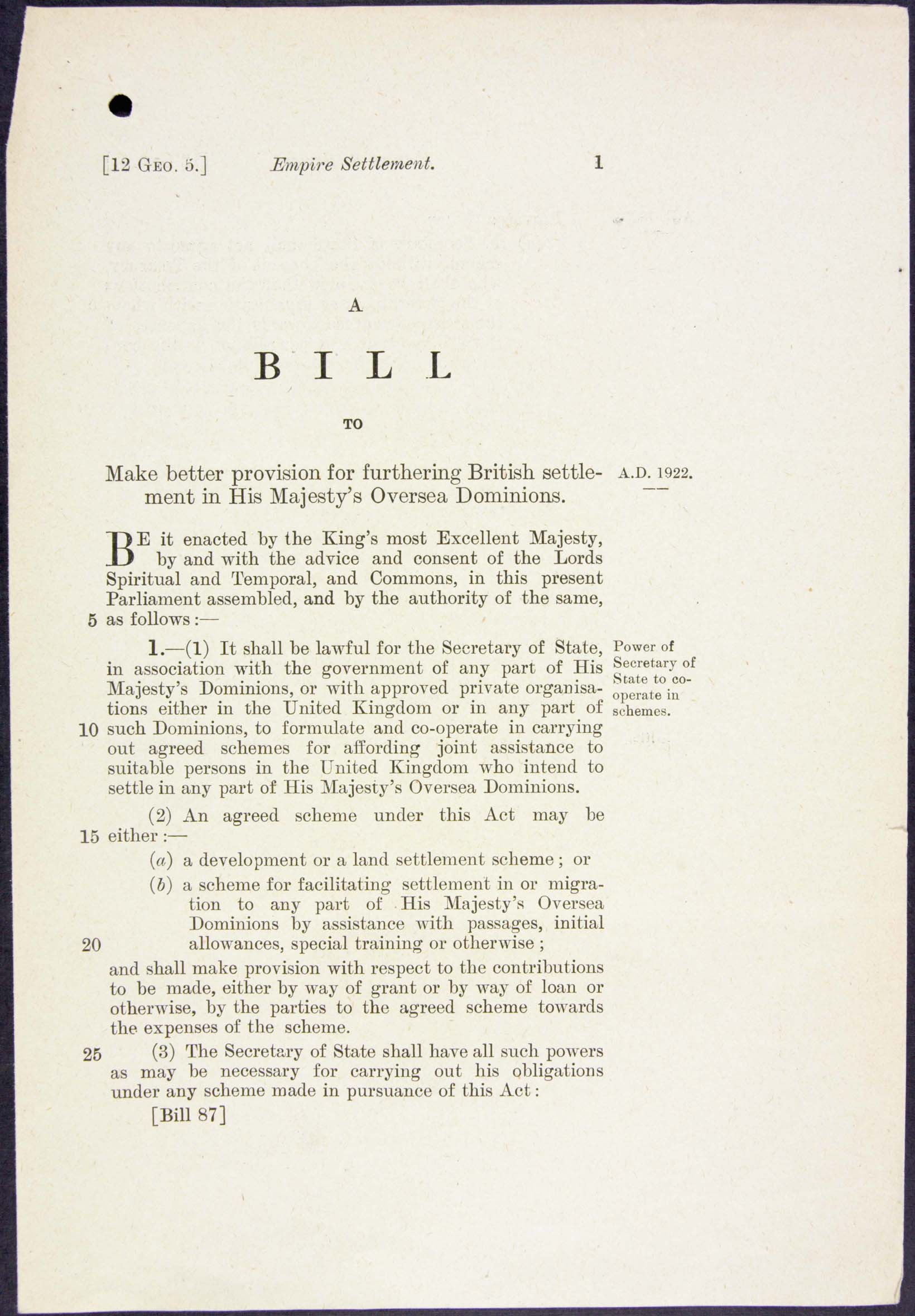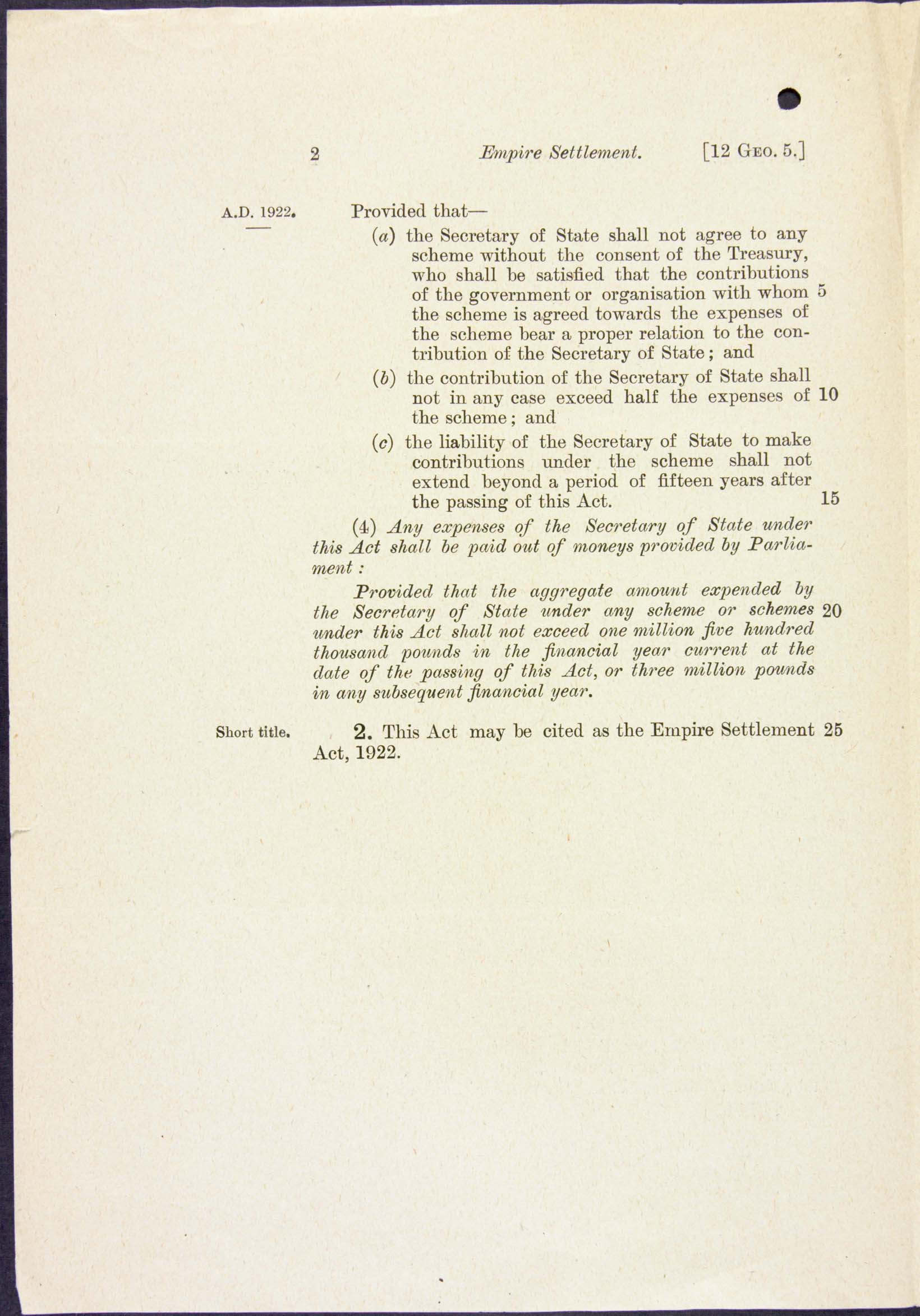The Empire Settlement Act of 1922 was an agreement between the British government and several commonwealth countries designed to facilitate the resettlement of agriculturalists, farm labourers, domestics and juvenile immigrants throughout the Empire. In Canada, several different settlement schemes were developed in which potential immigrants were offered assistance with transportation costs and skill-specific training as incentives for settlement.
When the Canadian economy began to show signs of improvement in the 1920s, the federal government renewed its efforts to attract British immigrants. Actively pursuing British settlement was seen as a way of ensuring the predominance of British values in Canadian society.[1] However, British immigration had been steadily declining following the First World War with growing prosperity in Great Britain and the high cost of transatlantic transportation acting as disincentives for emigration.[2] The Canadian government hoped to counteract these deterrents by collaborating with the British government in programs of assisted settlement.
A variety of different settlement schemes were initiated in Canada under the terms of the Empire Settlement Act. Inducements for emigration included reduced transportation fares, agricultural training and financial aid. Under the 3,000 Family Scheme, British families were offered financing for farm purchases, placement on Canadian farms and practical instruction in agriculture. Another program offered female domestic workers from Britain assistance with their passage and guaranteed work at standard wages. British subjects already in Canada could also nominate their relatives, friends and acquaintances for farm labour or domestic work.[3]
Not all of the settlement schemes were met with success. More than 1,000 of the families approved for the 3,000 Family Scheme withdrew from the program after receiving their initial loan. A plan to bring unemployed British miners to Canada to harvest wheat ended with 75% of the more than 8,000 recruited individuals returning to Great Britain.[4]
The settlement programs initiated under the Empire Settlement Act failed to attract the desired number of British immigrants. Approximately 165,000 British immigrants arrived in Canada as participants in various settlement schemes, far less than the millions originally envisioned. With the onset of the Great Depression and the election of a new Conservative government in 1930, the programs of assisted settlement effectively came to an end.[5]
Library and Archives Canada. Statutes of Canada. A Bill to Make Better Provisions for further British Settlement in His Majesty's Oversea Dominions, 1922. Ottawa: SC 12 George V, Bill 87
- John A. Schultz, “’Leaven for the Lump’: Canada and Empire Settlement, 1918-1939,” in Emigrants and Empire: British Settlement in the Dominions between the Wars, ed. Stephen Constantine (Manchester: University of Manchester Press, 1990), 150.
- Ninette Kelley and Michael Trebilcock, The Making of the Mosaic: A History of Canadian Immigration Policy (Toronto: University of Toronto Press, 1998), 189.
- Kelley and Trebilcock, 190-191.
- Kelley and Trebilcock, 190.
- Schultz, 168.

